Midland Colors
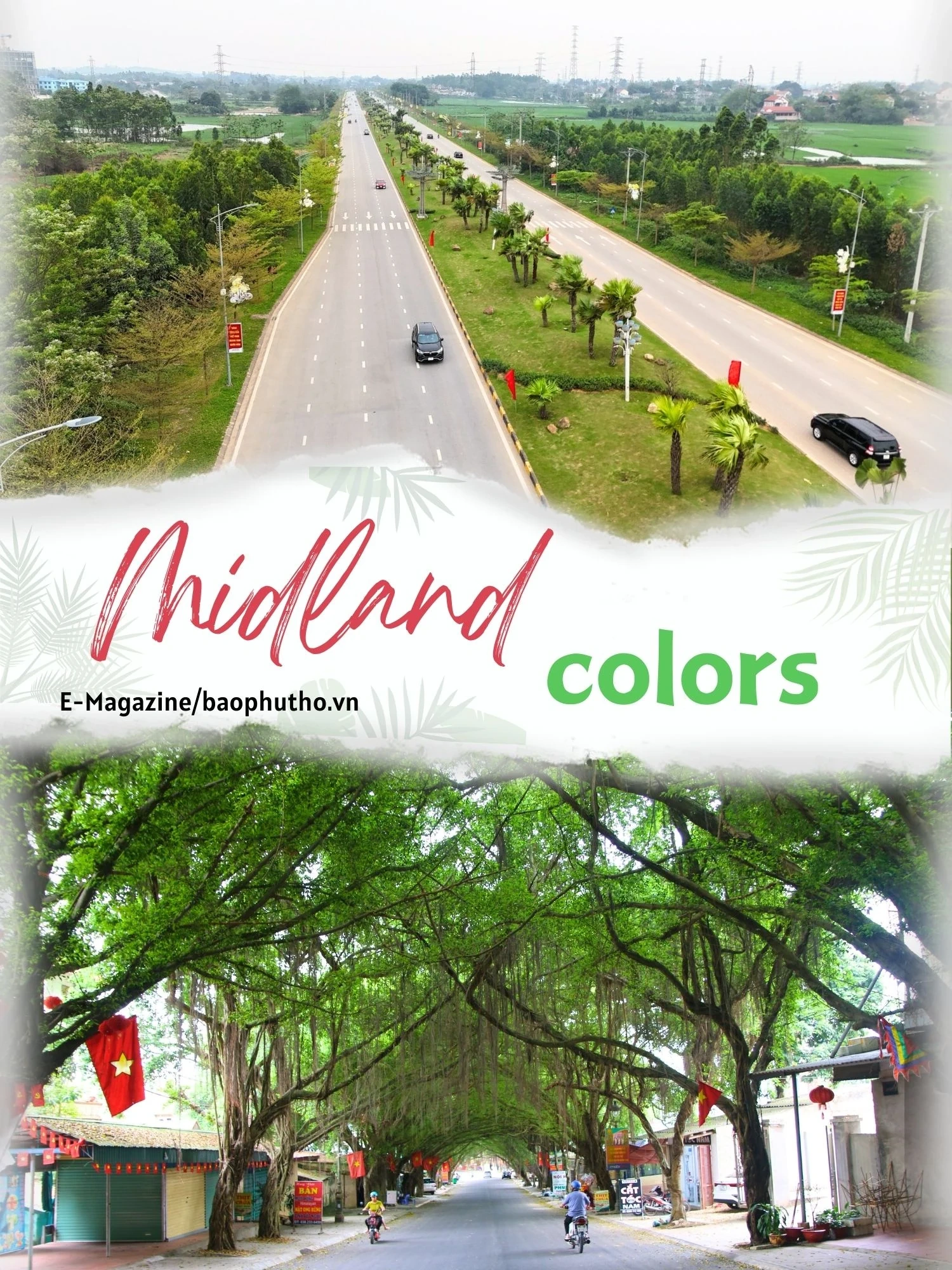
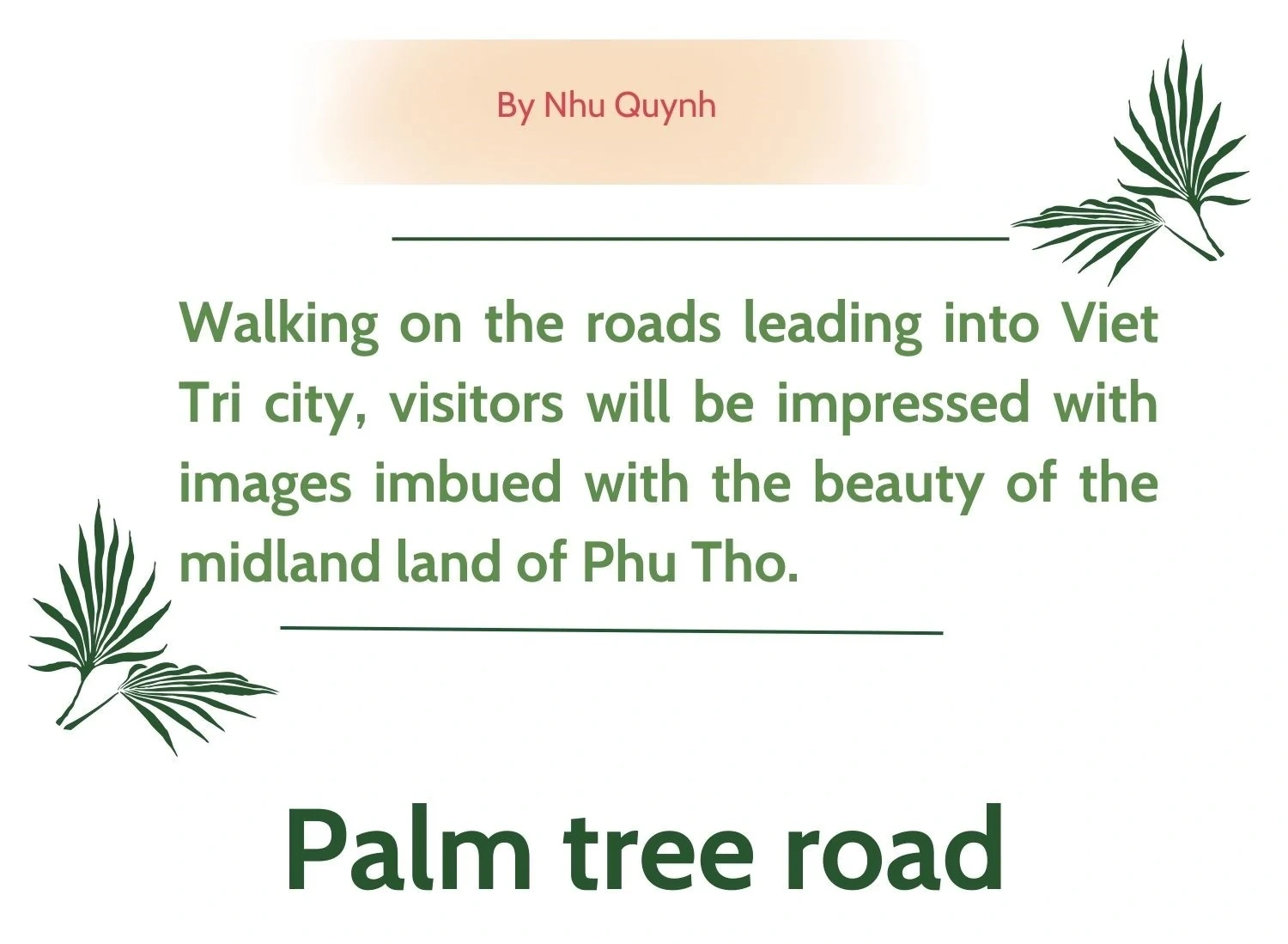
At the IC7 intersection (Noi Bai-Lao Cai highway), the gateway to Viet Tri city, visitors will see images of palm trees, a typical symbol of the countryside and people of the midland region.
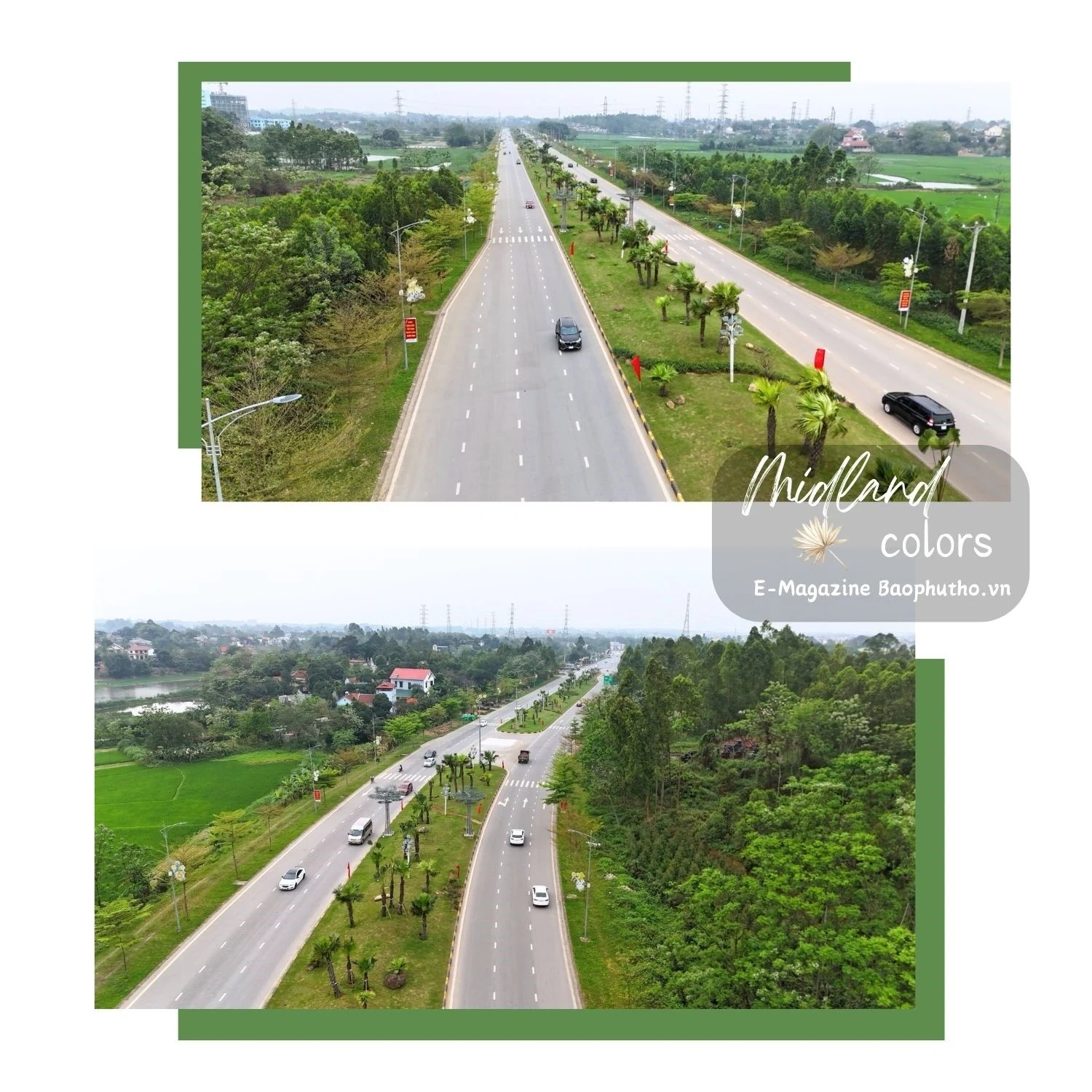
In October 2020, Viet Tri city planted 334 palm trees 1.5–2m high at the IC7 intersection (Noi Bai–Lao Cai highway) and 2,070 palm trees 1-3m high along Phu Dong road.
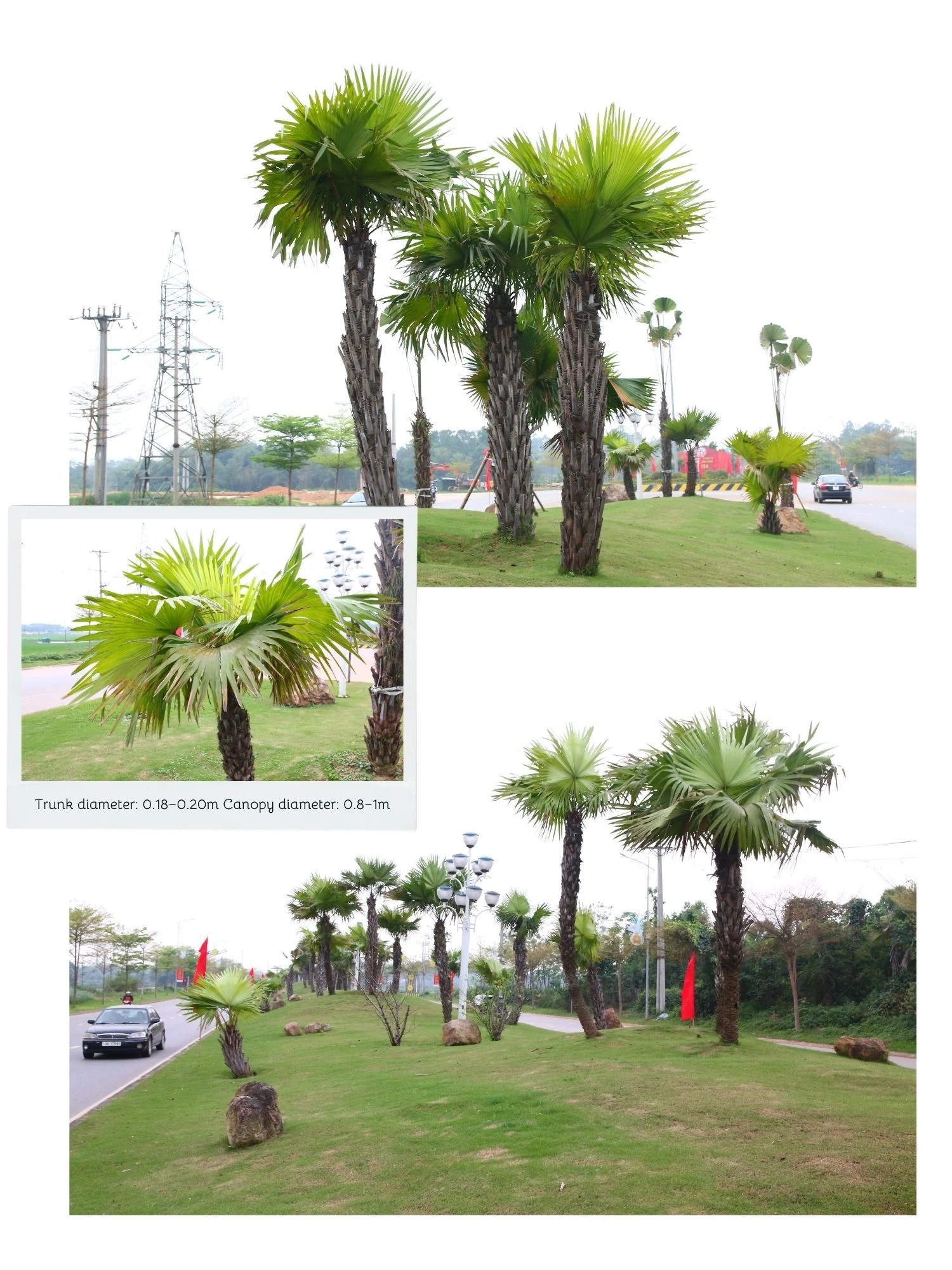
Palm is a forest tree that belongs to the secondary wood species and prefers full light. The tree trunk is cylindrical in shape, about 20–30m in diameter, bearing many leaves concentrated at the top.
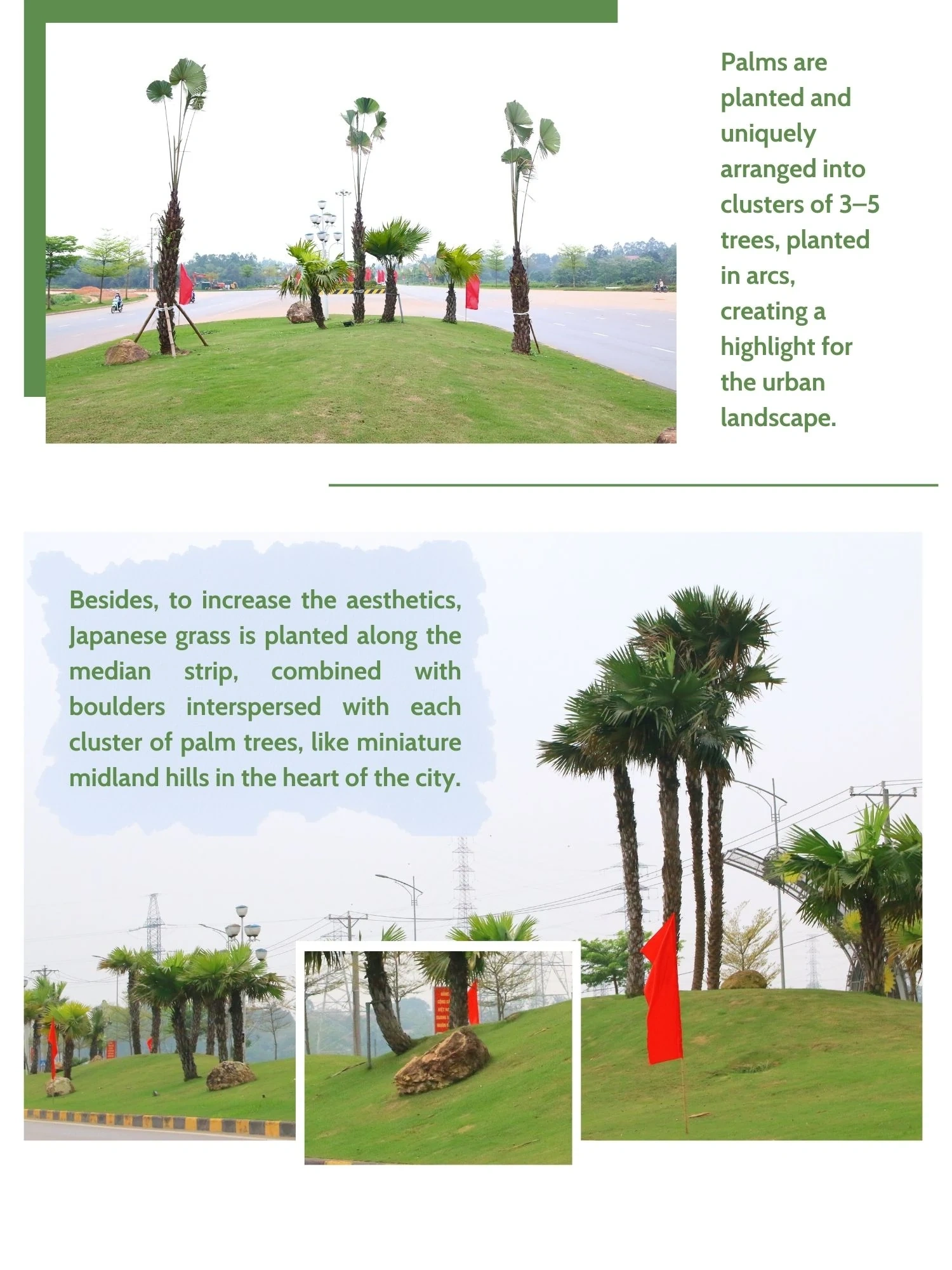
Old leaves grow towards the ground, fresh leaves grow obliquely or horizontally, young leaves grow vertically, forming a spherical canopy that looks like a fountain spraying in all directions.
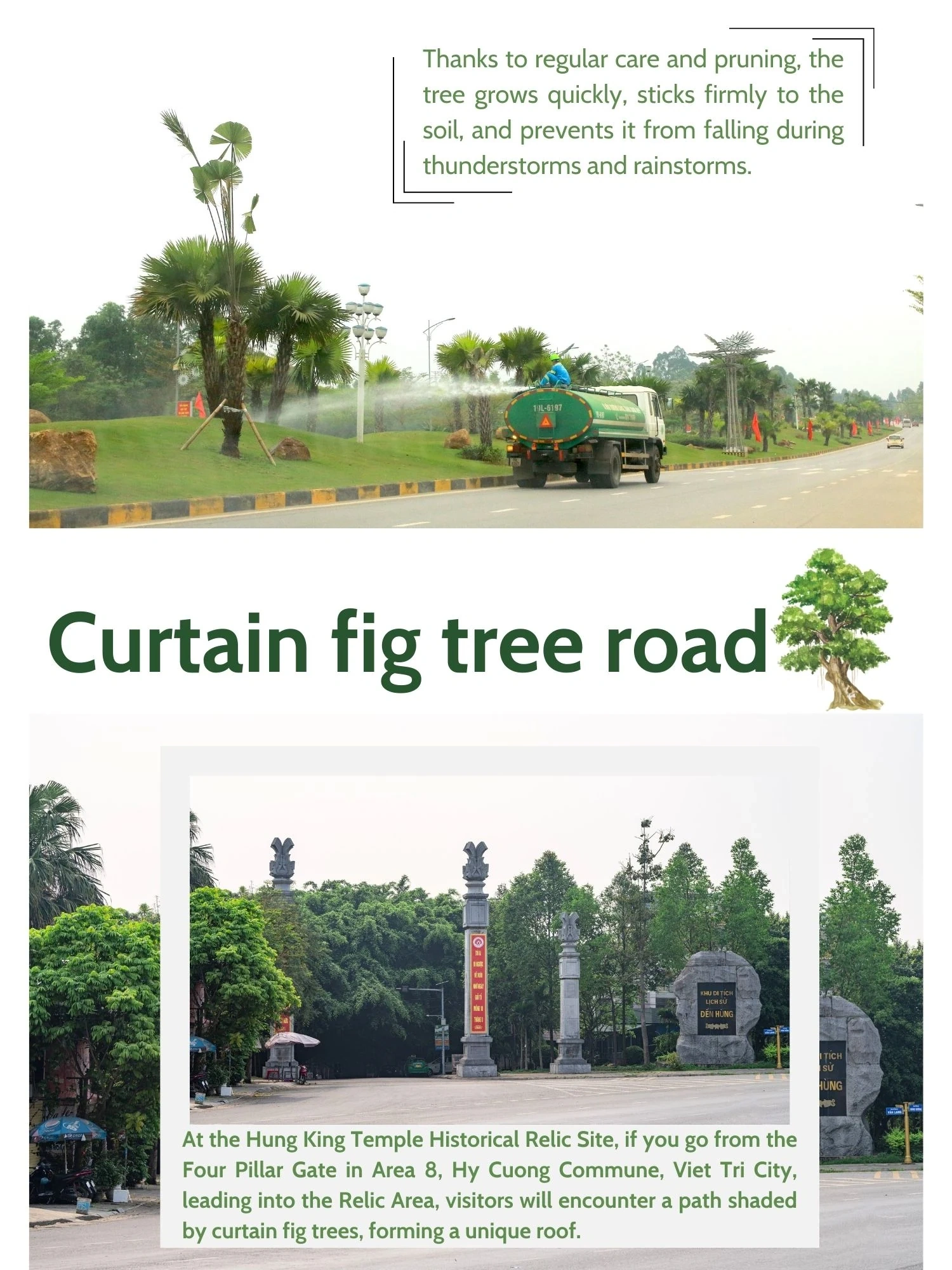
In the spring of 1998, Hung King Temple Historical Relic Site planted 100 curtain fig trees on both sides of the road to create landscape and shade. The curtain fig trees have relatively equal circumference and height; each tree is planted more than 2 meters apart; the trunk circumference ranges from 40-80cm, and the tree canopy leans towards the road, creating a giant canopy extending over the 300-meter road surface.
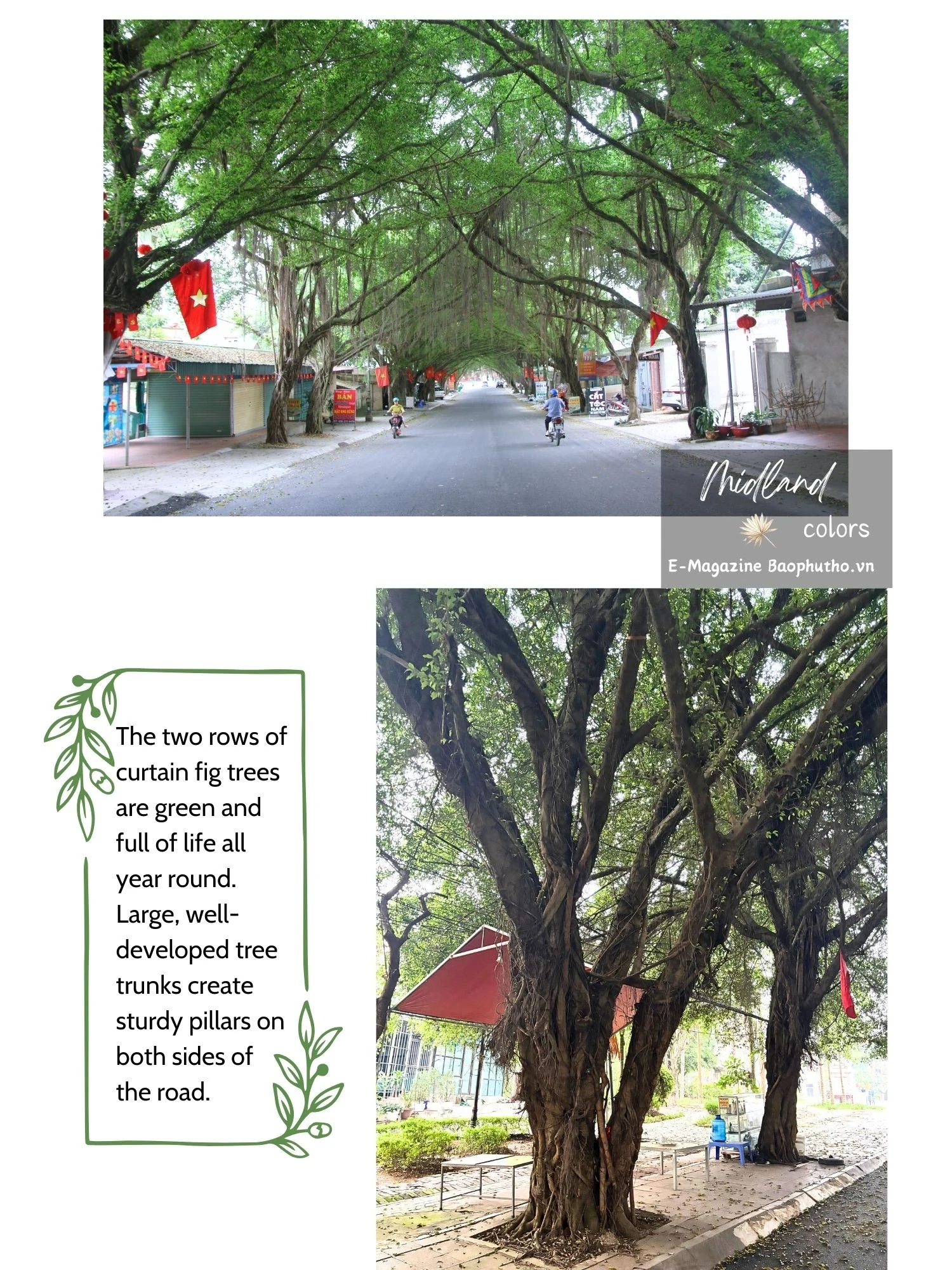
The branches and leaves stretch out to create a tree canopy that looks like spreading umbrellas.
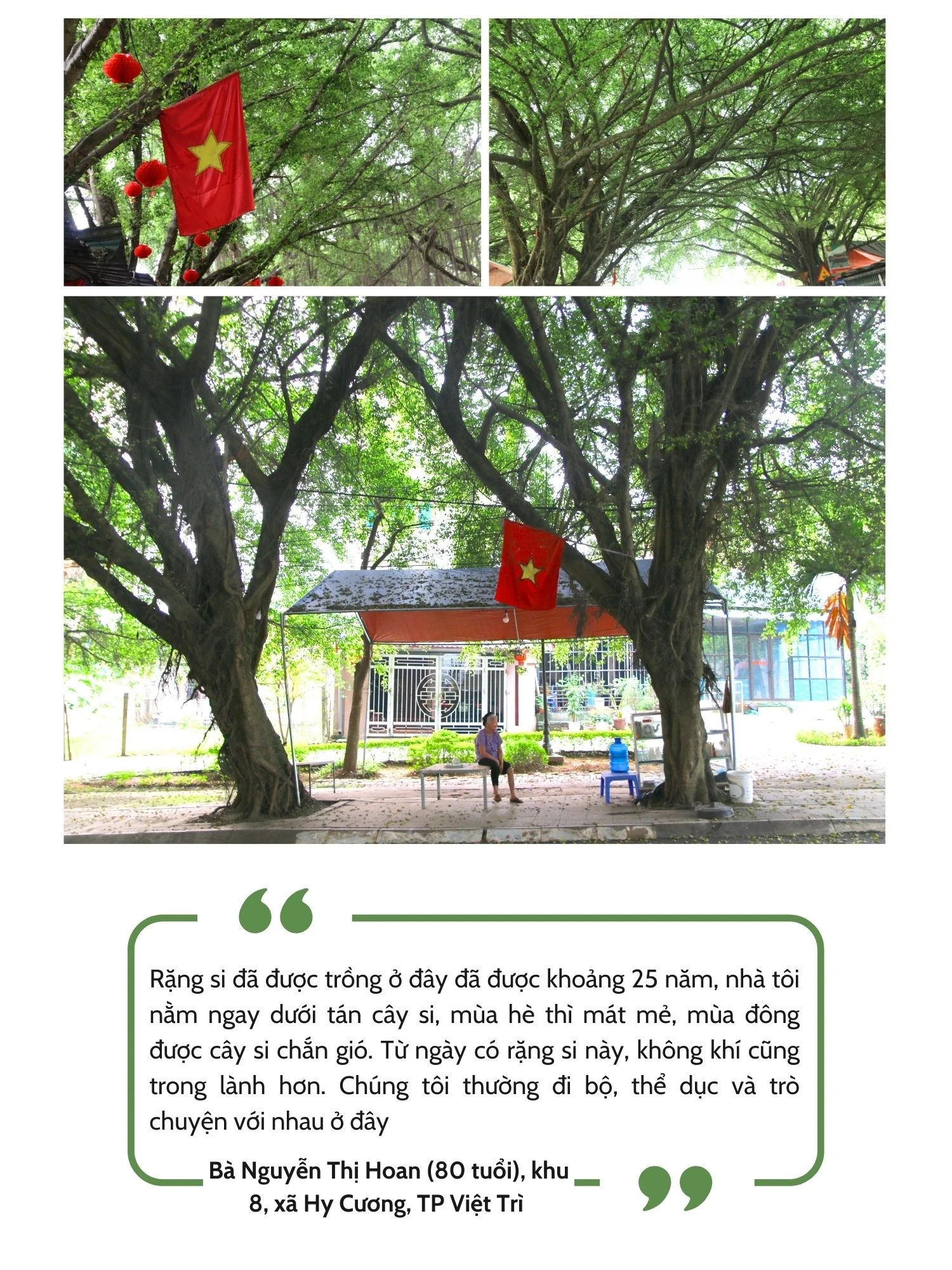
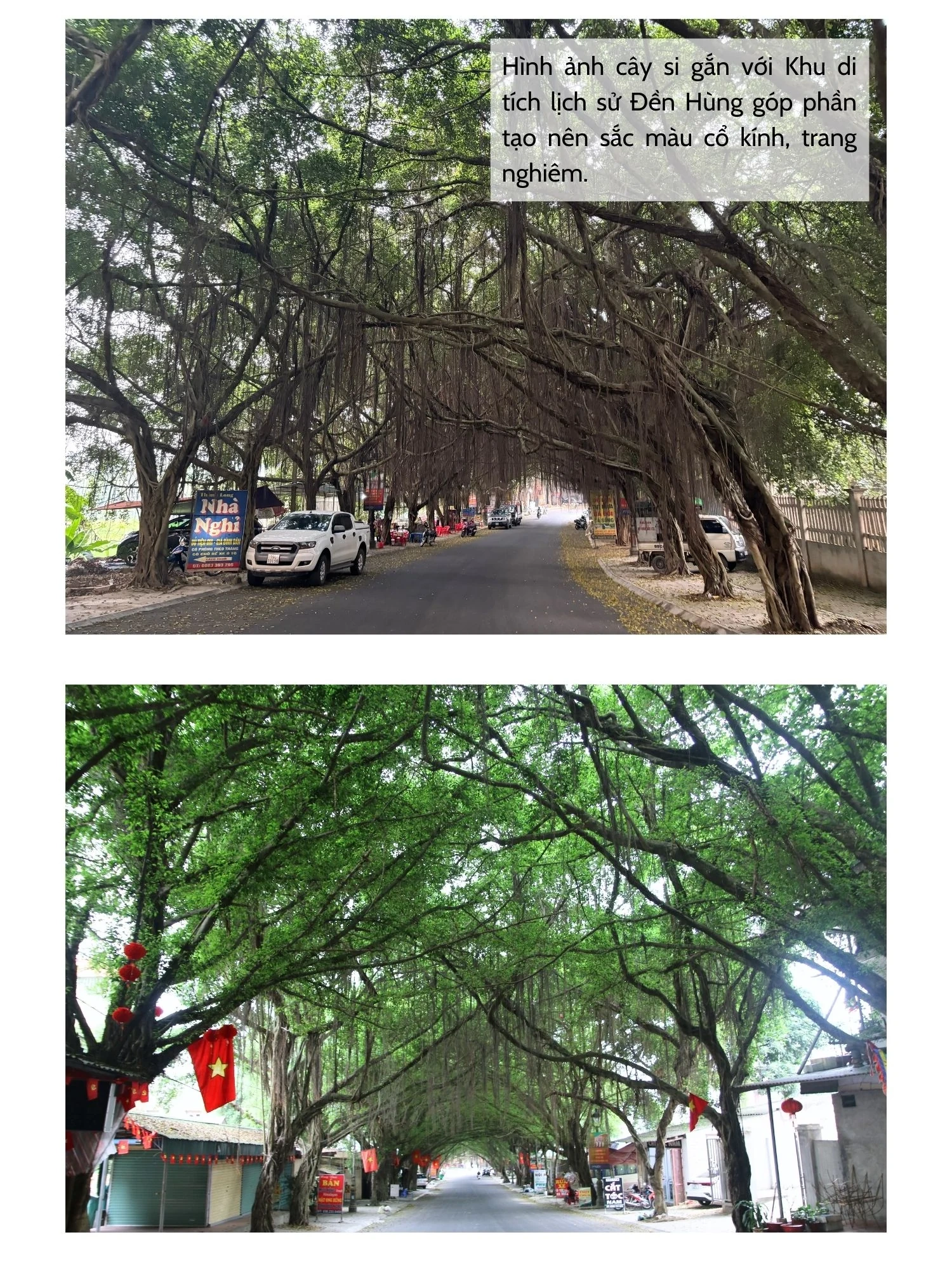
Every year, the Hung Temple Historical Relic Area prunes and takes care of curtain fig trees on major national holidays and before the rainy and stormy season so that children and grandchildren can visit Hung King Temple.
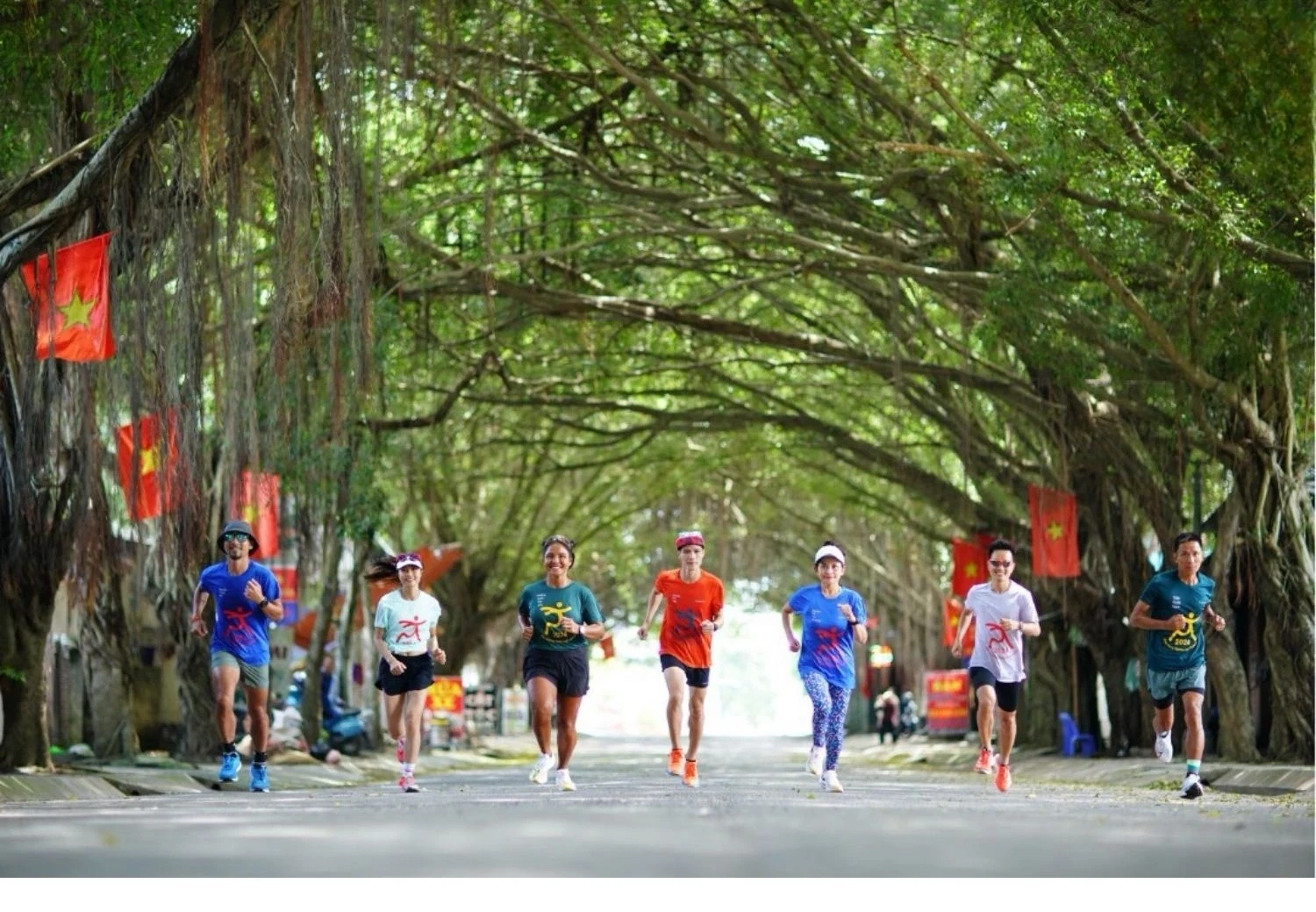
With their own unique beauty, these roads have made an impression on every visitor when coming to Viet Tri city in particular and Phu Tho province in general, contributing to promoting the image and cultural beauty of people in the ancestral land.
Nhu Quynh
0:16:06:2024:23:07 GMT+7








